The new Law of Jante: 8 rules we are proposing that better reflect modern Norwegian society.
Janteloven is a satirical set of ‘rules' for Scandinavian society that were created in the 1930s. After almost ninety years, we’ve given them an update.

Janteloven (the law of Jante) is an unspoken social code that dictates how people interact with each other.
A social code of sorts
It was initially devised by a man named Aksel Sandemose as a satirical criticism of Danish society, but can easily be applied to all three Scandinavian countries. The law is made up of ten rules:
- You’re not to think you are anything special
- You’re not to think you are as good as we are
- You’re not to think you are smarter than we are
- You're not to convince yourself that you are better than we are
- You're not to think you know more than we do
- You're not to think you are more important than we are
- You're not to think you are good at anything
- You're not to laugh at us
- You're not to think anyone cares about you
- You're not to think you can teach us anything
Arguably, these ten original rules are just as relevant as they were when they were first written in the 1930s.
Read more: A personal experience of Janteloven
However, after ninety years, we thought they deserved an update, and I leapt at the challenge. Here are eight new rules for Janteloven in Norwegian society today.
1. You must not buy a fossil-fuelled car
We all know by now that climate change presents a very real threat to both the planet and humanity. We also know that one of the ways we can combat climate change is by swapping out fossil fuels (such as oil, gas and coal) for renewable alternatives (such as solar, hydro and wind power).
So far, Norway has resisted calls to stop or reduce its oil and gas production. However, it comes to electric cars, they’re well ahead of the game.
In 2020, 54% of all new cars sold in Norway were electric, making it the first country in the world where electric car sales surpassed other types of cars.
Currently, more than 12% of all cars in Norway are electric, and that number is only set to increase in accordance with the government’s current plan to reduce the country’s emissions by 40%, and specifically that “all new passenger cars and light vans sold should be zero-emission by 2025”.
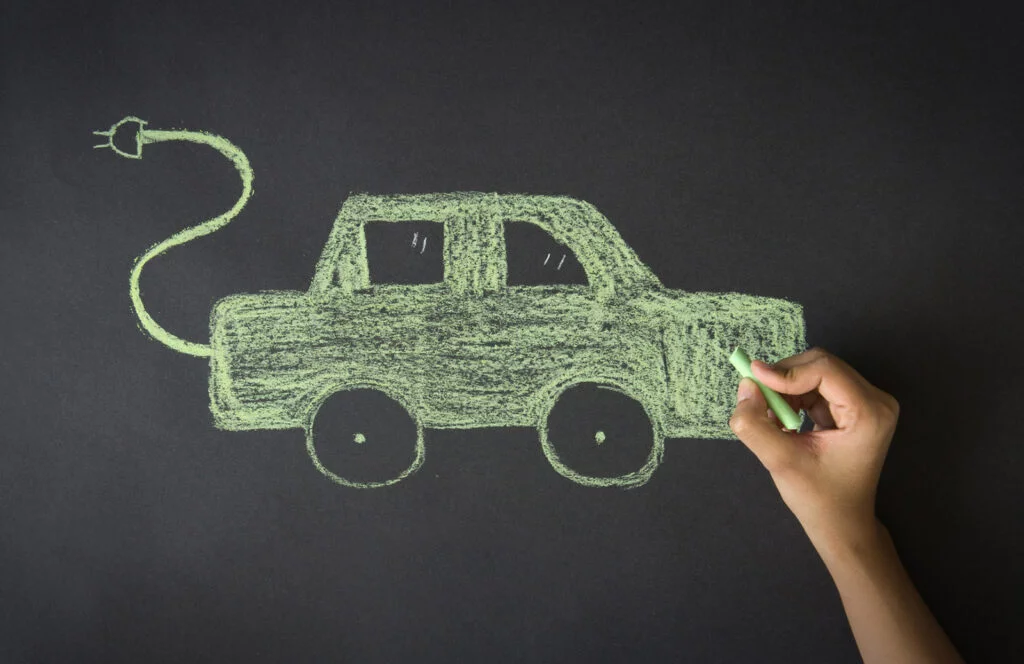
This change has mainly been achieved through a number of incentives, such as “the 50% rule”, wherein municipalities may only charge electric car users a maximum of 50% of costs related to parking, tolls and ferries compared to petrol and diesel car users.
In terms of the climate, this is undeniably a positive development as electric cars are much less harmful to the environment than petrol or diesel cars, and in Oslo alone, road traffic is responsible for half of the city’s greenhouse gas emissions.
However, electric cars have become a bit of a contentious issue in the districts compared to the cities.
For example, on my last visit to the North, my partner’s mother and aunt both expressed their fear that the Norwegian Green Party (Miljøpartiet De Grønne) and other supporters of electric cars were trying to stop them from driving all together.
While this particular concern is unfounded, there is a general feeling of skepticism towards electric cars in more rural areas generally due to their insufficient ranges and a lack of charging stations.
These concerns, while completely valid, are not unfixable, and cars are already becoming longer range and more charging stations are being installed. Therefore, it’s entirely likely that Norway will exceed its zero-emission goals (although the question still remains of how much good replacing petrol and diesel cars with electric ones does if you’re also producing over two million barrels of oil a day to sell to the rest of the world…).
2. You must not laugh at us (but we can laugh at ourselves)
Having lived abroad for a few years now, it seems that one of the things that the British are most known for outside the UK, aside from drinking tea, eating fish and chips, and complaining about the weather, is our self-deprecating humour.
While not all culture stereotypes are true for everyone (for example, I hate tea), I have to admit that British people do mock everything. We mock the things we hate. We mock the things we love. And, more importantly, we don’t mind when non-British people mock British people either.
Arguably, this is more of a survival tactic than a sign of security in ourselves as a nation, as our country seems determined to continuously embarrass itself on a global scale, from our Eurovision entries to our Prime Ministers defiling pig heads. Yet, for whatever reason, we are well-versed in the art of self-deprecation.
Norwegians on the other hand aren’t quite as comfortable with this yet.
This isn’t to say that they don’t laugh at themselves, nor that they never do anything worth laughing at – like when leader of the Norwegian Progress Party (Fremskrittspartiet) Sylvi Listhaug put on a survival suit and floated in the Mediterranean Sea for approximately two minutes before being rescued, in an attempt to understand what it’s like being a refugee. This was both obviously ridiculous and objectively hilarious, and Norwegians were quick to (rightly) roast her.
My favourite response is this tweet, which says “Next week: Sylvi Listhaug experiences the daily life of a visually impaired person by closing her eyes.”
However, if a non-Norwegian person were to join in with laughing at something Norwegian, the tone shifts abruptly. All laughter instantly ceases and a tense silence prevails until the Norwegian coughs and says something like “Yes… well…” before launching into a clumsy defence of the thing they were just laughing about.
As a British person, this has been a particularly jarring cultural divide to experience, particularly as trading insults is a type of love language back home. However, this cultural difference has not only been a surprise to Brits. Lorelou Desjardins, a French woman living in Oslo who runs the extremely popular blog “A Frog in the Fjord”, has also noticed it:
“Strangely enough a lot of readers laugh only when I make fun of non-Norwegians,and become very sensitive when I use irony against Norwegians. The time I wrote about strange things Norwegians do during meetings or about unclear Norwegian women, my texts were criticized, with packs of brunost thrown at my face for saying such bad things about this great country.”
Listen: A Frog in the Fjord – One Year in Norway
The unspoken rule appears to be that only Norwegians understand Norway enough to be allowed to laugh at it. It doesn’t matter if you live in Norway, pay taxes in Norway, and conform to Norwegian social rules, if you’re not Norwegian, you are simply not able to laugh at Norway.
Though, to be honest, how much do you have to understand to find this hilarious?
3. You must speak English to foreigners learning Norwegian
In September 2020, Torbjørn Røe Isaksen, the Norwegian Minister of Labour and Social Inclusion at the time, proposed adding Norwegian classes to the “aktivitetsplikten”, which are activities you must participate in to receive social welfare.
This suggestion was motivated by the fact that 56% of people receiving social welfare in 2019 were immigrants.
“If poor Norwegian skills are a reason that you’re struggling to get a job, we now want to make Norwegian classes part of the activity obligation for those under 30. This will also improve integration and equip more people for working life.”
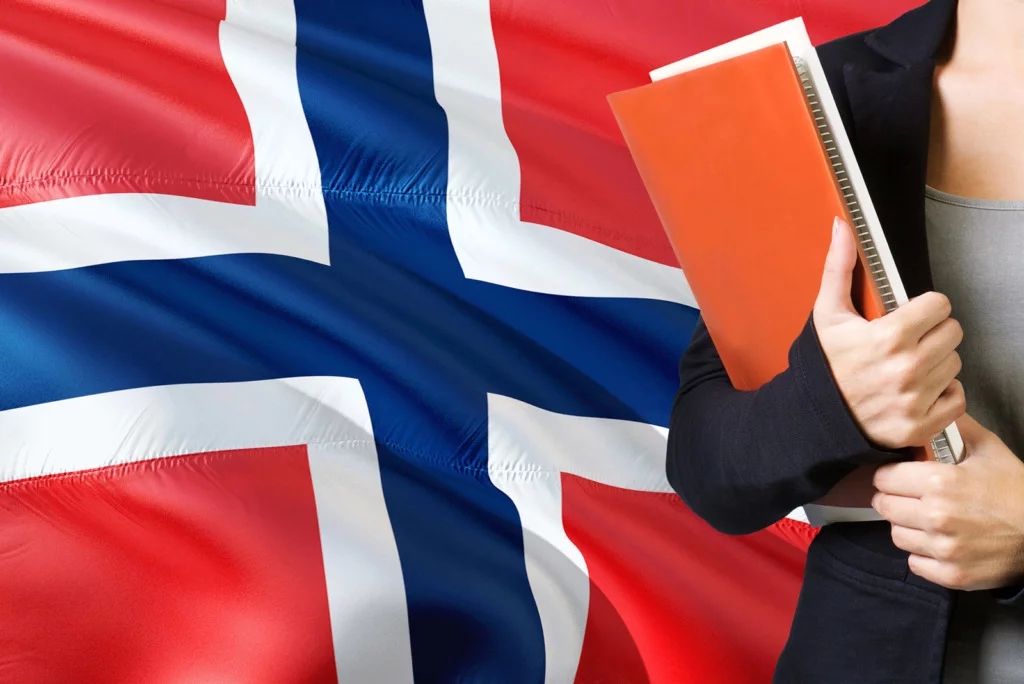
Setting aside all the reasons why this demonstrates that Isaksen has the same understanding of the reasons that immigrants struggle to find work in Norway as a goldfish in a bowl does of the ocean, I find this proposition absolutely hilarious because do you know how hard it is to get a Norwegian to speak to you in Norwegian if they suspect that you’re foreign?
Read more: The Challenge of Learning Norwegian
When I first visited Norway about six years ago, I was two years into my Norwegian studies. However, it was very easy to tell from my accent that I was not Norwegian.
This meant that even if I spoke Norwegian to someone, they’d quite often reply in English. Or, if we were speaking in Norwegian, they’d switch to English at the first hint that I didn’t understand something perfectly. This is despite the fact that they had no way of knowing whether I even spoke English – they just assumed I could.
This quite often resulted in the absolute farce of me stubbornly continuing to speak to them in my accented, stunted Norwegian, and them insisting on replying in their less stunted yet still accented English.
Six years later, and this doesn’t happen to me anymore – unless I’m out with my English-speaking friends. Even if we all can speak Norwegian (and do speak Norwegian to the people outside of our group), as soon as a Norwegian hears English, that’s it. It’s like a language switch is flipped in their brain and no amount of fancy dialectal words or convincing skarre will flip it back.
I appreciate that this isn’t done maliciously. Some Norwegians may simply enjoy speaking English, in the same way that I enjoy speaking Norwegian. They may also just be trying to be helpful if they see someone is struggling.
It also isn’t all Norwegians; my partner’s northern relatives seemed relieved when they realised I speak Norwegian and are extremely patient with me, even on those days where my brain’s struggling to formulate sentences in English.
But in all honesty, do you know who I spoke the most Norwegian with when I was a student in Oslo? Immigrants like me.
4. You must not step outside the cultural order
Norwegians are often accused of being cold or rude by foreigners. As Kristen Rygg, associate professor at the Norwegian School of Economics (NHH), pointed out, this isn’t an entirely fair accusation, as there “are no universal standards for politeness.”
Norwegians can be perceived as “cold” by outsiders, just as Brits can be perceived as “two-faced” and Americans as “insincere”. Yet, people born into these cultures do not share these perceptions, as they understand the social rules and act in accordance with them.
That said, the Norwegian social rules are pretty strict.
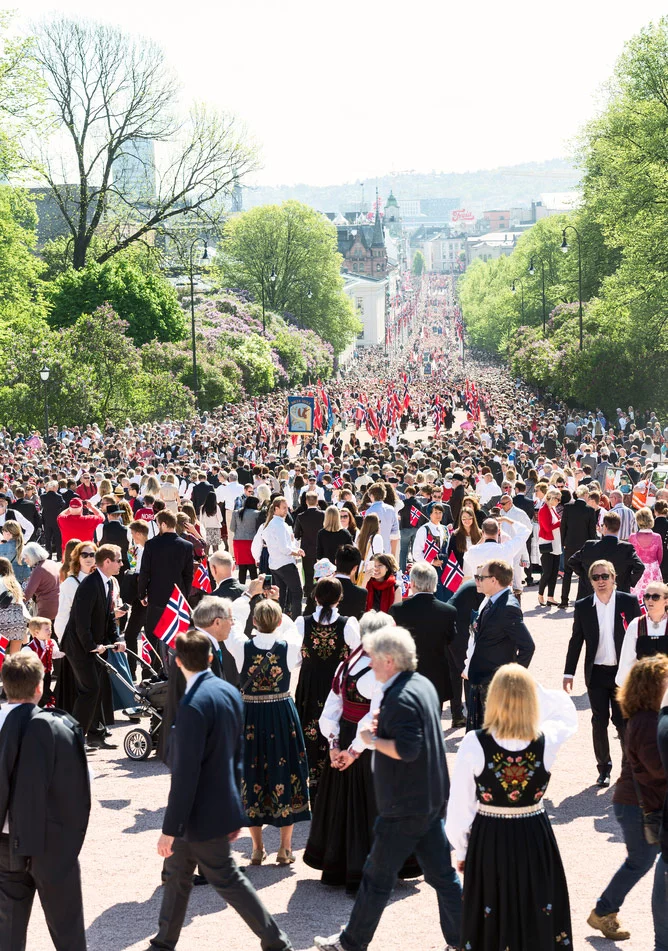
In 2011, a study was published on the differences between the “tightness and looseness” of 33 countries.
According to the study, a tight culture has “strong norms and a low tolerance of deviant behaviour”, while a loose culture has “weak norms and a high tolerance of deviant behaviour” (“deviant” here simply refers to actions stepping outside of the established norms, rather than anything nefarious).
The study gave Norway a score of 9.5, making it a relatively tight culture. For context, other tight countries included Pakistan (12.3), India (11), Singapore (10.4), South Korea (10), Japan (8.6) and China (7.9). Looser cultures included Ukraine (1.6), Estonia (2.6), Hungary (2.9), Israel (3.1), the Netherlands (3.3) and Brazil (3.5). The United States scored 5.1 while the UK scored 6.9.
There are a lot of factors that contribute to a country’s tightness-looseness score, and it’s important to understand that describing a culture as tight or loose is not a value judgement. There are advantages and disadvantages associated with both, and those advantages and disadvantages can differ from culture to culture.
That said, it might still surprise some people that Norway scored closer to South Korea and Japan in tightness than its European neighbours. On the other hand, if you know about Janteloven – or if you’ve ever accidentally sat too close to a Norwegian at a bus stop – this result won’t seem too surprising at all.
However, as Rygg also pointed out, one of the staples of Norwegian politeness is not unnecessarily bothering other people. Therefore, a Norwegian is unlikely to confront you even if you are behaving “deviantly”. So, how is this tight culture enforced?
The answer: through the heavy, heavy weight of collective silent disapproval and judgement from the people around you.
While this sounds very severe, it’s not always a bad thing. For example, a book from 1998 reported that, despite drinking more than Americans, Norwegians were much less likely to drive drunk than Americans – and part of this could be due to the social pressure:
“Norwegians also almost showed a universal moral disapproval of drinking after consuming as many as four drinks and they were more likely than Americans to believe that their peers would also disapprove.”
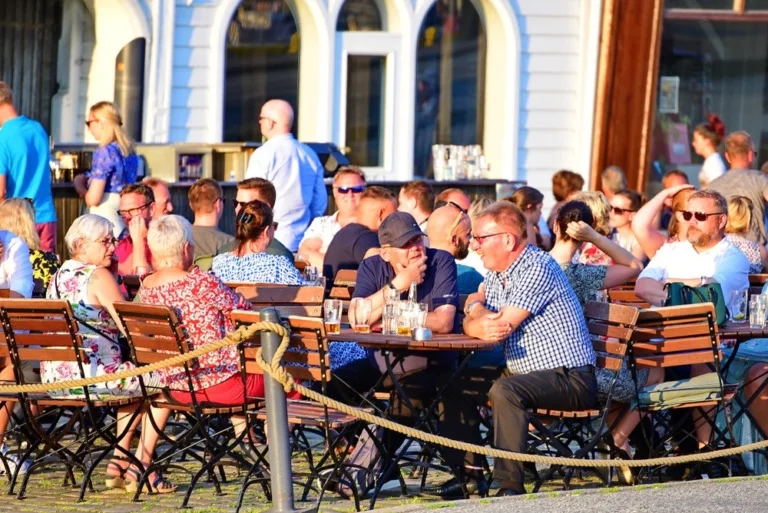
Then again, this pressure also means that if we need to quickly pop to our nearest corner shop in the evening, I have to watch my partner go through about four outfit changes before he feels he’s dressed in a way that will be deemed acceptable by any Norwegian that may see him.
5. You must be technologically literate
If, like me, you have a partner who works in IT, then chances are that throughout the course of the relationship, you’ll have been introduced to more apps and gadgets than you ever thought possible to even exist.
However, in Norway, this love of technology is no longer solely restricted to IT enthusiasts. As usability has increased and prices have decreased, Norwegians as a whole have developed a weakness for expensive tech (which seems strange when you consider that these are the same people who won’t think twice about travelling to a completely different country just to buy cheaper groceries).
In 2019, approximately NOK 34.44 billion worth of electronics were sold in Norway, which includes mobile phones, smart watches, and increasingly large TVs. Also in 2019, Norway had an internet penetration rate of 98%, one of the highest in the world.
According to Datareportal, this number had risen to 99% as of January 2021.
Read more: From Keychains to Smartphones: Raising Independent Children in the Age of Technology
Given this information, it’s hardly surprising that Norwegians adapted relatively well to remote working when the country shut down due to COVID-19. A lot of Norwegian workplaces already had arrangements for “home office” in place before the pandemic struck, and new technologies were developed in record time to make the adjustment as smooth as possible.
This doesn’t mean that Norwegians didn’t struggle in the pandemic – either technologically or mentally. Just that their willingness to embrace new technology was not a disadvantage when the country was put into lockdown.
While I don’t think I necessarily would use half the technology I do if I didn’t live in Norway, I can’t say that it doesn’t benefit my life.
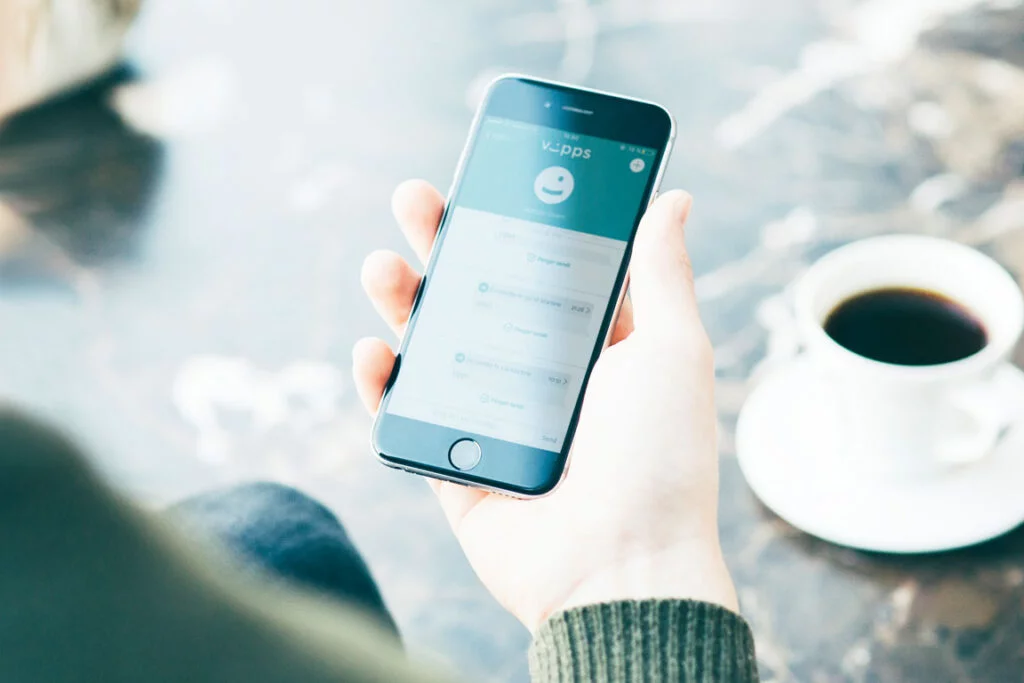
All my bills are electronic, as are any prescriptions, and if I need to get somewhere in a hurry, I can just jump on an electric scooter that I unlock with an app (although I’m not exactly thrilled whenever I get into bed and ask Google to turn off the lights and it decides to do the exact opposite and blind me with the full force of the sun).
However, technology appears to be moving so quickly in Norway that not everyone is able to keep up. The elderly in particular are less likely to be technologically adept than the younger generations.
This isn’t too big of an issue when it comes to personal preference, such as deciding between a fridge that keeps your food cold and a fridge that keeps your food cold but also can tell you the weather in sixteen different countries. But it is more of a concern when it comes to public services and care.
For example, Norway initially struggled to reach the 75-84 year old group for their vaccinations, as they were asked to register digitally using their Bank ID (among other things).
In comparison, the UK government sent everyone a letter by post and gave people the option of booking their vaccine online or by telephone, which resulted in a much quicker vaccine uptake.
Overall, I’m in favour of these technological developments, and I don’t think elderly people are incapable of using technology. Last year, my 89-year-old grandma made a Facebook account for the first time, and it’s been lovely to video chat with her forehead as she looks down at her iPad screen.
However, Norway also seems prone to jumping the gun when it comes to implementing technological innovations without a sufficient transitionary period from the previous systems.
6. You must not pay in cash
The other day, I was in my local REMA 1000, standing the recommended metre away from the person in front of me as we queued for the checkout.
The person in front of me was taking a little longer to pay than expected for their few items, and when I actually took notice of what was happening, it was easy to see why: they were paying in cash.
It was only then that I realised that I couldn’t actually pinpoint the last time I had paid in cash – or even seen an ATM. I’ve had a Norwegian bank account since 2018, so it must’ve been before then – and I remember it being a hassle trying to track down an ATM even then.
Along with the other Nordic countries, Norway is swiftly transitioning into a cashless society.
According to a 2019 report from Deloitte, cash made up a mere 2.5% of the total money supply in Norway and Sweden, and “Norwegians on average only withdrew cash from ATMs 8 times per year” – numbers which have probably only decreased in the time since that report was published.
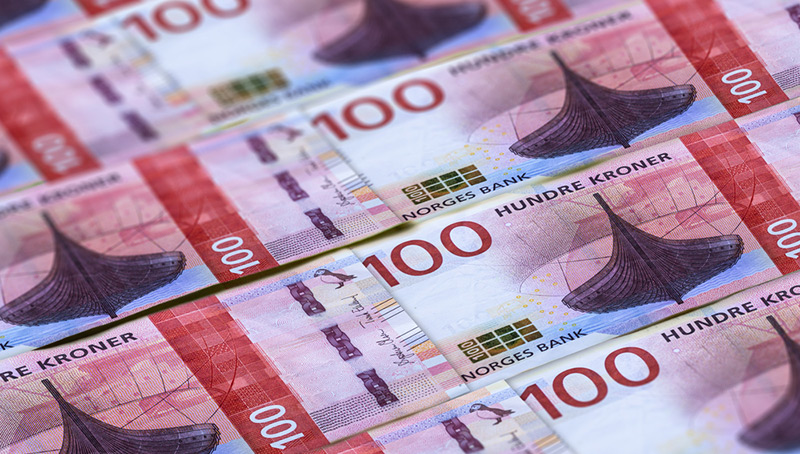
(Side note: I have no idea where this magical ATM that the Norwegians are withdrawing cash from is, but I can imagine that there is only one and that it appears at the end of the rainbow, like a pot of black gold).
Cash in Norway took a particular hit in 2015, when its share of money supply plummeted by 48% following the launch of Vipps, which is a mobile payment app that connects directly to your bank account.
While you can use Vipps to perform ordinary transactions, such as buying metro tickets or paying bills, it’s most commonly used for “peer to peer” transactions – i.e. sending money to other people.
In fact, a survey conducted by Norges Bank reported that 58% of peer-to-peer payments from 2017 to 2018 were made using phones – something that apps like Vipps have no doubt contributed to.
So far, Vipps only works with Norwegian bank accounts (though the app can be used for accounts with most Norwegian banks), and it’s insanely useful.
The only potential downside is that since it connects to your bank account, it displays your full name when transferring funds – which has led to the slightly surreal occasions of being greeted by my friends with an accusatory “Your middle name is RUTH?!” as if it was some family secret I was guarding with my life.
However, if you don’t have a Norwegian bank account – or your middle name really is a family secret – you don’t need to worry: Norges Bank also reported that debit and credit cards made up 86% of payment methods in Norway in 2017, while cash made up 11% and smartphones made up 2%.
Deloitte also noted that debit and credit cards are the preferred payment method in Norway and Denmark, and Norway has an almost excessive 3.1 bank cards per capita.
Personally, the transition to working cashless was so seamless that I wasn’t even consciously aware that it was happening. Thinking about it now, I don’t miss using cash at all – although I am far more likely to spend a lot more money in a lot less time when I pay with a card than with cash.
No wonder my partner guffawed for a good few minutes when he found out that my English bank still sends me a checkbook (and yes, that I still pay for things with it when I’m in the UK).
7. You must buy over rent
Did you know that not only do Norwegians move out of their family home at a younger age than their European peers, but people also buy property much earlier in Norway than in other European countries – including their Nordic neighbours?
Does that also seem extremely unfair when the thought of the housing market in your home country sends you spiralling into a pit of anxiety and despair (or is that just me)?

Norway’s strong tradition of buying over renting isn’t mere fluke either. There are a number of factors that make it easier for young Norwegians to grab hold of that fabled first rung of the property ladder, including a high minimum wage, accessibility of education, and a thriving job market.
Even though the number of young people buying houses has generally declined across Europe in recent years, this dip has been less significant in Norway. For example, between 1996 and 2016, the proportion of UK homeowners aged between 25 and 34 dropped from 55% to 34%.
Compare this to Norway in 2016, when 53% of Norwegians in their late twenties owned property, as did 70% of people in their early thirties.
According to DNB, in 2019, 48,526 people in Norway bought their first property, the highest number since 2015, and first-time buyers represented 3.4% of total buyers, the highest proportion since 2012. The average age of these first-time buyers in big Norwegian cities is between 26 and 29, and around 28.8 in Oslo.
All this paints the picture of Norway as some sort of housing utopia for millennials, and I’m sure it would be…
… if only the housing prices weren’t rising with the uncontrollable enthusiasm of a helium balloon escaping the sticky clutches of a small child.
Rising house prices have been a well-known cause of concern for a long time in Norway. Despite the record-number of first-time buyers in 2019, housing prices also increased by an average of 2.5% compared to the previous year (the highest growth being in Oslo, where prices rose by 3.9%).
You may ask then how young people can still afford property – and they answer is they can’t, so they get help from their parents. A survey conducted by DNB in 2018 showed that 5 out of 10 first-time buyers under 35 received financial assistance from their family, mainly in the form of financial contributions (inheritance or monetary gifts) or acting as a guarantor on the mortgage.
While there’s no reason that parents shouldn’t help their children buy property if they’re able, it shouldn’t become a prerequisite, as not everyone has parents who are able to do so.
I often hear people say that rent is just “money out of the window”. I understand what they mean, but considering that mortgages are currently “out of the realm of possibility”, I think I’m going to be renting for a little while longer yet.
8. You must not pick the cloudberries
One of the most important aspects of Norwegian culture is friluftsliv or the outdoors lifestyle.
To ensure that everyone has access to nature, Norwegians have “the right to roam” (‘allmennsretten'), which became a legal right in 1957 with the adoption of the Norwegian Outdoor Recreations Act (Friluftsloven).

The law enables people to go wherever they want, stay anywhere they want for one night (except for in the mountains or national parks, where they can stay for longer), and forage food, such as mushrooms or berries. Except for cloudberries.
Cloudberries are small, juicy berries that resemble orange blackberries. They only grow in certain environments, and can therefore be pretty expensive to buy at the supermarket.
They’re most common in northern Norway, but before you head up there for some easy pickings, you should know that it’s not quite as simple as that.
In 1854, Nordland, Troms and Finnmark passed a law that enabled people to prohibit the picking of cloudberries on their private land. These areas are clearly signposted so there’s no danger of accidentally eating someone’s cloudberries.
In Finnmark, anyone can pick cloudberries on public land to eat immediately. However, if you want to take them home later and you aren’t a resident of Finnmark, you’ll have to apply for a permit. It is also illegal to pick unripe cloudberries throughout the entire country.
Admittedly, this last rule is different from the seven other suggestions for a new Jantelov, as it’s an actual law. However, in my opinion, it’s also an excellent example of Norwegian society as a whole.
Norwegians enjoy good lives with a great deal of opportunities and support. However, in order for this system to exist, there’s a common understanding that we have responsibilities as well as privileges, and that we can’t just always take anything we want.
In fact, I think it could make an excellent idiom: slow and steady wins the race. Actions speak louder than words. Don’t eat the cloudberries.
What do you think of our suggestions for a modern take on janteloven? Do you have any suggestions of your own? Let us know!


Hillarious, all of that was so true))))
Btw, you can withdraw cash in the shops and petrol stations.
Traditional janteloven rules no. 2, 7 and 9 are stupid.
The other seven rules are the golden principle of humanity.
Hi,
I think you list is great and give s a good overview of do’s and don’ts of Norwegian society these days. However, they have nothing to do with janteloven. Neither 1.0 nor 2.0. Norwegians want to own property because of an attachment to accessing private property and especially land, due to a historically unequal access to land due to inheritance laws for farms which favored only one child. The reason people buy electric cars has also nothing to do with janteloven. Your number 4 is probably linked. All in all I think Janteloven is almost used as a catchy title but the article is plenty enough to stand on its own. One last thing, Janteloven in Sandemose’s book is not a satire, as you mention. I really don’t think so, as he describes how tyrannic these social rules, which resonates for many Scandinavians today. Sorry for such a harsh comment, I am tired of reading articles supposedly referring to or analysing Janteloven when the only thing coming from that is a copy paste from a book very few people have read. I suggest a new title 10 rules about living in Modern Norway and taking out references to janteloven 🙂